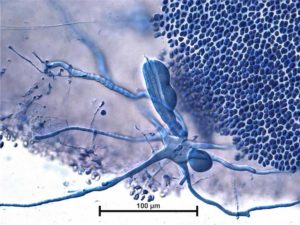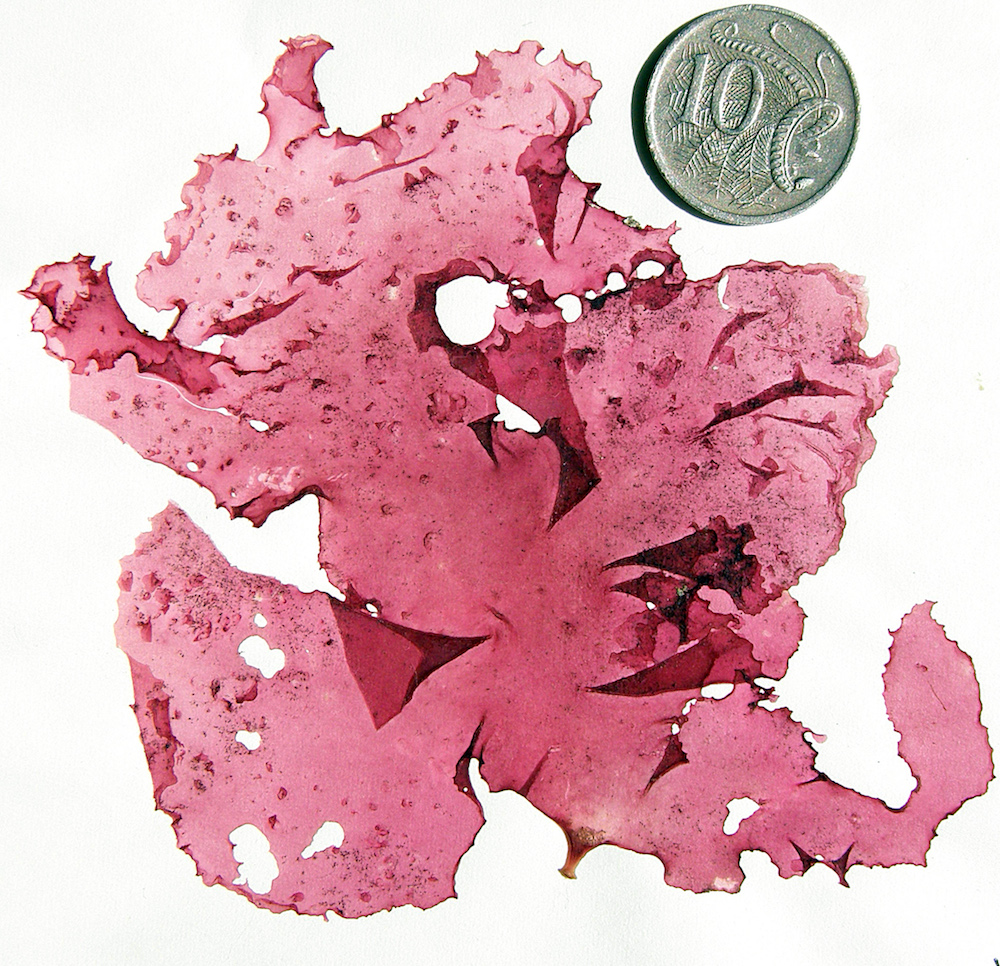Imagination can run riot when investigating the microscopic anatomy of algae.
A rather beautiful alga from Western Australia (Cryptonemia species) looks relatively ordinary from the outside—but, when tissues are squashed, expelling the unusual internal cells, a new world of cell shapes is revealed under the microscope.
What does the image of the large central cell remind you of? It is, in fact, of a ganglioid cell, unique to some members of the family Halymeniaceae. It gets its name because of the resemblance to the shape of a type of nerve cell found in animals, but as far as we know, doesn’t transmit impulses along its long arms as happens with animal ganglionic cells. In fact, the scientific literature is silent on its function.
A similarly unusual cell type from the Kallymeniaceae is the stellate cell.
It comes from inside membranous blades, in a similar position to that of ganglioid cells of the Halymeniaceae, and has short, radiating arms. Again, nothing is definitive about its function.
For more information about the genera with these cell types look at our Algae Revealed series.
Contributed by State Herbarium Honorary Research Associate Bob Baldock.




